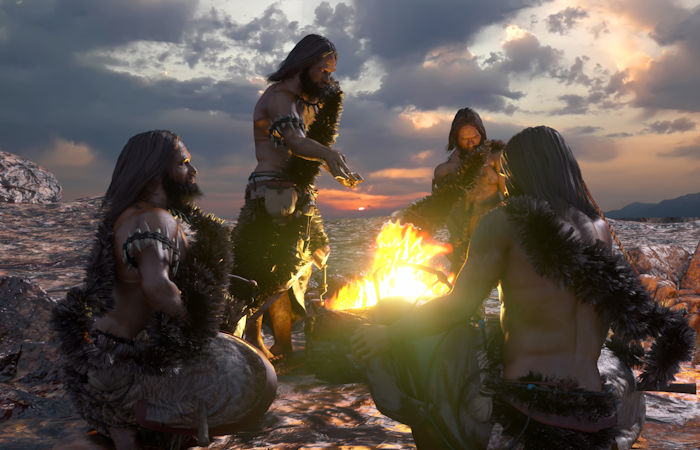The Real Paleo Diet: New Archaeological Evidence Changes What We Thought About How Ancient Humans Prepared Food
AncientPages.com - We humans can't stop playing with our food. Just think of all the different ways of serving potatoes—entire books have been written about potato recipes alone. The restaurant industry was born from our love of flavouring food in new and interesting ways.
Ancient cavemen people sit near a campfire. Credit: Adobe Stock - de Art
My team’s analysis of the oldest charred food remains ever found show that jazzing up your dinner is a human habit dating back at least 70,000 years.
Imagine ancient people sharing a meal. You would be forgiven for picturing people tearing into raw ingredients or maybe roasting meat over a fire as that is the stereotype. But our new study showed both Neanderthals and Homo sapiens had complex diets involving several steps of preparation, and took effort with seasoning and using plants with bitter and sharp flavours.
This degree of culinary complexity has never been documented before for Palaeolithic hunter-gatherers.
Before our study, the earliest known plant food remains in south-west Asia were from a hunter-gatherer site in Jordan roughly dating to 14,400 years ago, reported in 2018.
Scanning Electron Microscope images of carbonised food remains. Left: The bread-like food found in Franchthi Cave. Right: Pulse-rich food fragment from Shanidar Cave with wild pea. Ceren Kabukcu, Author provided
We examined food remains from two late Paleolithic sites, which cover a span of nearly 60,000 years, to look at the diets of early hunter gatherers. Our evidence is based on fragments of prepared plant foods (think burnt pieces of bread, patties and porridge lumps) found in two caves. To the naked eye, or under a low-power microscope, they look like carbonised crumbs or chunks, with fragments of fused seeds. But a powerful scanning electron microscope allowed us to see details of plant cells.
Prehistoric chefs
We found carbonised food fragments in Franchthi Cave (Aegean, Greece) dating to about 13,000-11,500 years ago. At Franchthi Cave we found one fragment from a finely-ground food which might be bread, batter or a type of porridge in addition to pulse seed-rich, coarse-ground foods.
In Shanidar Cave (Zagros, Iraqi Kurdistan), associated with early modern humans around 40,000 years ago and Neanderthals around 70,000 years ago, we also found ancient food fragments. This included wild mustard and terebinth (wild pistachio) mixed into foods. We discovered wild grass seeds mixed with pulses in the charred remains from the Neanderthal layers. Previous studies at Shanidar found traces of grass seeds in the tartar on Neanderthal teeth.
At both sites, we often found ground or pounded pulse seeds such as bitter vetch (Vicia ervilia), grass pea (Lathyrus spp) and wild pea (Pisum spp). The people who lived in these caves added the seeds to a mixture that was heated up with water during grinding, pounding or mashing of soaked seeds.
View of Shanidar Cave in Zagros, Iraqi Kurdistan. Chris Hunt, Author provided
The majority of wild pulse mixes were characterised by bitter tasting mixtures. In modern cooking, these pulses are often soaked, heated and de-hulled (removal of the seed coat) to reduce their bitterness and toxins. The ancient remains we found suggest humans have been doing this for tens of thousands of years. But the fact seed coats weren’t completely removed hints that these people wanted to retain a little of the bitter flavour.
What previous studies showed
The presence of wild mustard, with its distinctive sharp taste, is a seasoning well documented in the Aceramic period (the beginning of village life in the south-west Asia, 8500BC) and later Neolithic sites in the region. Plants such as wild almonds (bitter), terebinth (tannin-rich and oily) and wild fruits (sharp, sometimes sour, sometimes tannin-rich) are pervasive in plant remains from south-west Asia and Europe during the later Paleolithic period (40,000-10,000 years ago). Their inclusion in dishes based on grasses, tubers, meat, fish, would have lent a special flavour to the finished meal. So these plants were eaten for tens of thousands of years across areas thousands of miles apart. These dishes may be the origins of human culinary practices.
Based on the evidence from plants found during this time span, there is no doubt both Neanderthals and early modern humans diets included a variety of plants. Previous studies found food residues trapped in tartar on the teeth of Neanderthals from Europe and south-west Asia which show they cooked and ate grasses and tubers such as wild barley, and medicinal plants. The remains of carbonised plants remains show they gathered pulses and pine nuts.
Plant residues found on grinding or pounding tools from the European later Palaeolithic period suggest early modern humans crushed and roasted wild grass seeds. Residues from an Upper Palaeolithic site in the Pontic steppe, in eastern Europe, shows ancient people pounded tubers before they ate them. Archaeological evidence from South Africa as early as 100,000 years ago indicates Homo sapiens used crushed wild grass seeds.
A Neanderthal hearth found at Shanidar Cave. Graeme Barker, Author provided
While both Neanderthals and early modern humans ate plants, this does not show up as consistently in the stable isotope evidence from skeletons, which tells us about the main sources of protein in diet over the lifetime of a person. Recent studies suggest Neanderthal populations in Europe were top-level carnivores. Studies show Homo sapiens seem to have had a greater diversity in their diet than Neanderthals, with a higher proportion of plants. But we are certain our evidence on the early culinary complexity is the start of many finds from early hunter-gatherer sites in the region.
Written by Ceren Kabukcu, Research Associate in Archaeology, University of Liverpool
Provided by The Conversation
This article is republished from The Conversation under a Creative Commons license. Read the original article.
More From Ancient Pages
-
 Evidence Ravens Share A 30,000-Year-Old Relationship With Humans
Archaeology | Jul 14, 2023
Evidence Ravens Share A 30,000-Year-Old Relationship With Humans
Archaeology | Jul 14, 2023 -
 Bonobos And Chimps: What Our Closest Relatives Tell Us About Humans
Featured Stories | Apr 6, 2023
Bonobos And Chimps: What Our Closest Relatives Tell Us About Humans
Featured Stories | Apr 6, 2023 -
 Ancient Entrance Gate Found In Biblical City Of Bethsaida (Zer) Where Jesus Performed His Deeds Of Power
Archaeology | Jul 11, 2018
Ancient Entrance Gate Found In Biblical City Of Bethsaida (Zer) Where Jesus Performed His Deeds Of Power
Archaeology | Jul 11, 2018 -
 Vikings’ Legacy Is Still Alive In Ireland – DNA, Ancient Ruins And Modern Cites Reveal
Civilizations | May 22, 2021
Vikings’ Legacy Is Still Alive In Ireland – DNA, Ancient Ruins And Modern Cites Reveal
Civilizations | May 22, 2021 -
 What 12 Ancient Skeletons Discovered In A Mysterious Tomb In Petra Could Tell Us About The Ancient City
Featured Stories | Oct 25, 2024
What 12 Ancient Skeletons Discovered In A Mysterious Tomb In Petra Could Tell Us About The Ancient City
Featured Stories | Oct 25, 2024 -
 Tiresias – Unusual Prophet Who Turned Into A Woman For Seven Years
Featured Stories | May 16, 2020
Tiresias – Unusual Prophet Who Turned Into A Woman For Seven Years
Featured Stories | May 16, 2020 -
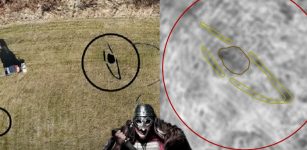 New Huge Viking Ship Discovered By Radar In Øye, Norway – What Is Hidden Beneath The Ground?
Archaeology | Apr 9, 2022
New Huge Viking Ship Discovered By Radar In Øye, Norway – What Is Hidden Beneath The Ground?
Archaeology | Apr 9, 2022 -
 12 Ancient Myths, Legends And Biblical Stories Confirmed By Modern Science
Featured Stories | Apr 22, 2017
12 Ancient Myths, Legends And Biblical Stories Confirmed By Modern Science
Featured Stories | Apr 22, 2017 -
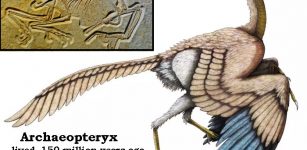 Oldest Recently Discovered Fossil of Bird ‘Archaeopteryx’ That Lived 150 Million Years Ago
Archaeology | Jan 29, 2018
Oldest Recently Discovered Fossil of Bird ‘Archaeopteryx’ That Lived 150 Million Years Ago
Archaeology | Jan 29, 2018 -
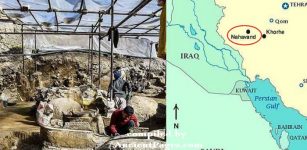 More Evidence Linked To Enigmatic Laodicea Temple In Nahavand Found By Iranian Archaeologists
Archaeology | Aug 7, 2020
More Evidence Linked To Enigmatic Laodicea Temple In Nahavand Found By Iranian Archaeologists
Archaeology | Aug 7, 2020 -
 Maori God Pourangahua And His Flying Bird Traversing The Ancient Skies
Featured Stories | Oct 4, 2015
Maori God Pourangahua And His Flying Bird Traversing The Ancient Skies
Featured Stories | Oct 4, 2015 -
 Sacred Number Six And Its Symbolic Significance In Ancient Cultures
Ancient Symbols | Dec 27, 2017
Sacred Number Six And Its Symbolic Significance In Ancient Cultures
Ancient Symbols | Dec 27, 2017 -
 The Fierce Great Heathen Army And The Invasion Of East Anglia
Vikings | Aug 8, 2022
The Fierce Great Heathen Army And The Invasion Of East Anglia
Vikings | Aug 8, 2022 -
 Violent Steppe Invasion In Iberia Peninsula Theory Challenged By Archaeologists
Archaeology | Sep 10, 2024
Violent Steppe Invasion In Iberia Peninsula Theory Challenged By Archaeologists
Archaeology | Sep 10, 2024 -
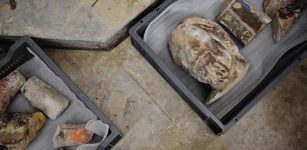 Surprising Discovery Of Ancient Sarcophagus At Paris’ Notre Dame Cathedral
Archaeology | Mar 16, 2022
Surprising Discovery Of Ancient Sarcophagus At Paris’ Notre Dame Cathedral
Archaeology | Mar 16, 2022 -
 Before The Pharaohs: The Evidence For Advanced Civilization In Egypt’s Mysterious Prehistory
Civilizations | Apr 14, 2017
Before The Pharaohs: The Evidence For Advanced Civilization In Egypt’s Mysterious Prehistory
Civilizations | Apr 14, 2017 -
 Ancient Egyptian Monuments Threatened By Climate Change Restored By Oriental Institute
News | Mar 9, 2023
Ancient Egyptian Monuments Threatened By Climate Change Restored By Oriental Institute
News | Mar 9, 2023 -
 On This Day In History: First Battle Of Reading Took Place – On Jan 4, 871 AD
News | Jan 4, 2017
On This Day In History: First Battle Of Reading Took Place – On Jan 4, 871 AD
News | Jan 4, 2017 -
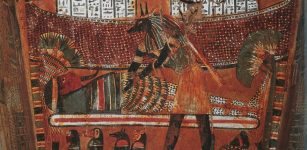 Immortal God Anubis: Lord Of The Sacred Land, Jackal God Of Mummification
Egyptian Mythology | Sep 19, 2016
Immortal God Anubis: Lord Of The Sacred Land, Jackal God Of Mummification
Egyptian Mythology | Sep 19, 2016 -
 Elusive Legendary Mist Witches Who Can Be As Wise As Dangerous
Featured Stories | Mar 3, 2025
Elusive Legendary Mist Witches Who Can Be As Wise As Dangerous
Featured Stories | Mar 3, 2025

